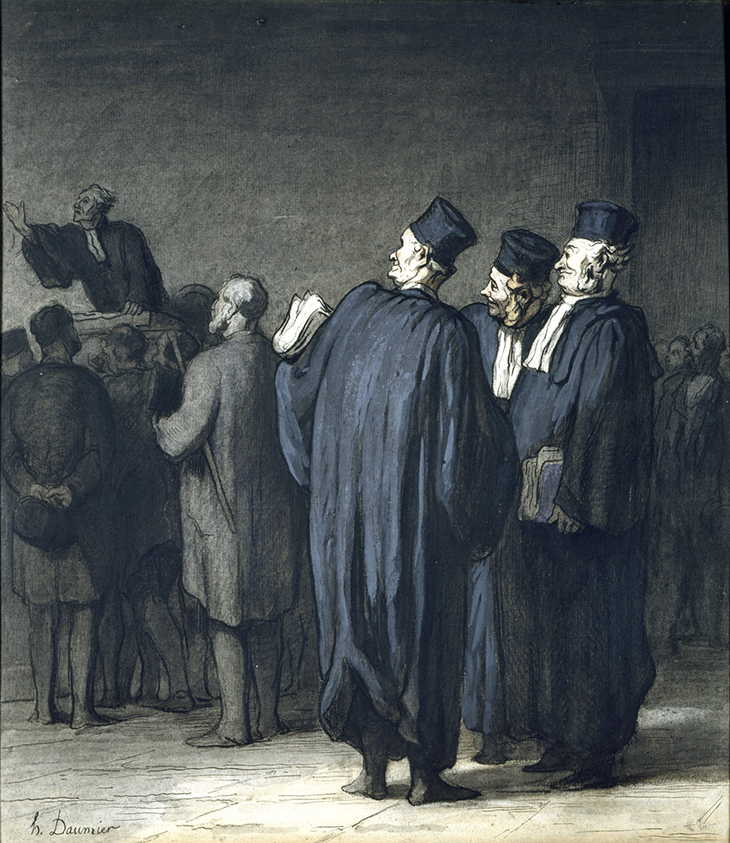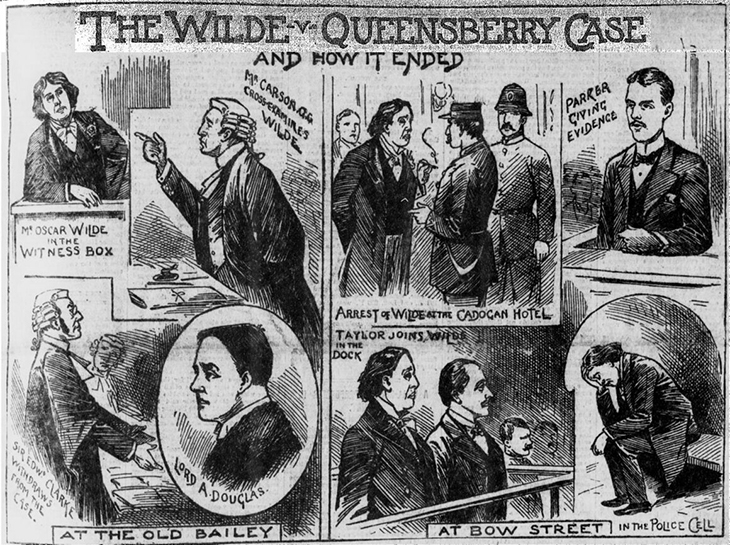Introducing Rakewell, Apollo’s wandering eye on the art world. Look out for regular posts taking a rakish perspective on art and museum stories.
Judging by the interest they stirred up on Twitter and elsewhere, courtroom artist Jane Rosenberg’s sketches of Ghislaine Maxwell drawing Rosenberg in return have struck a chord – or even a nerve. People were quick to point out the parallels with M.C. Escher’s trippy lithograph of two hands drawing each other into being, and have been by turns fascinated and spooked. ‘Maybe she was just bored coming out of her jail cell,’ Rosenberg told the Guardian. ‘I know her sister sometimes sketches in court. Maybe the Maxwell family just likes to sketch in their free time.’ The jury’s out on whether there’s anything more sinister going on here, but the images have had Rakewell looking back to earlier days of this particular art form.
While not approaching his subject from a strictly documentary point of view, Honoré Daumier brilliantly captured the theatre, foibles and cynicism of the French judicial system in the second half of the 19th century. Fingers point, counsel’s gowns sweep and bundles of papers are almost audibly shuffled in the artist’s effervescent courtroom scenes.
The Lawyers (1870–75), Honoré Daumier. Walters Art Museum, Baltimore

There was perhaps less satire but plenty more melodrama in the way the Illustrated London News covered the libel case between Oscar Wilde and the Marquess of Queensberry in 1895 and the subsequent prosecution of Wilde for ‘gross indecency’. The comic-strip approach of ‘The Wilde v Queensberry Case And How it Ended’ seems to merge scenes observed and imagined, with enough sensationalism to have their Victorian readers choking on their breakfast kippers.
Courtroom illustrations from the trial of Oscar Wilde at the Old Bailey in 1895, published in Illustrated Police News

It was only three years after Wilde’s trial that, back across the Channel, the illustrator, journalist and art critic Maurice Feuillet was sketching first Émile Zola on trial (for libelling the French army) during the Dreyfus affair and then, a year later, Alfred Dreyfus himself (for treason). In contrast to the many satirical cartoons published at the time, Feuillet’s sketches from life are marked by their neutral treatment of protagonists from both sides – though Zola’s thunderous looks are hard to misinterpret.
Zola on trial (1898), Maurice Feuillet. Musée d’art et d’histoire de Judaïsme, Paris

Though clearly at the top of her game, Jane Rosenberg has it easier than her British counterparts: since the passing of the Criminal Justice Art in 1925, sketching as well as taking photographs in court is prohibited, meaning that court artists in the UK must make notes of what they’re witnessing before sketching the scenes later from memory. But precedents have been set for that rule to change, and with increasing tolerance for cameras in courts in both the UK and the US, this lively, idiosyncratic form of recording courtroom scenes looks to be a dying art. Now that really would be a shame – if not criminal.
Got a story for Rakewell? Get in touch at rakewell@apollomag.com or via @Rakewelltweets.




